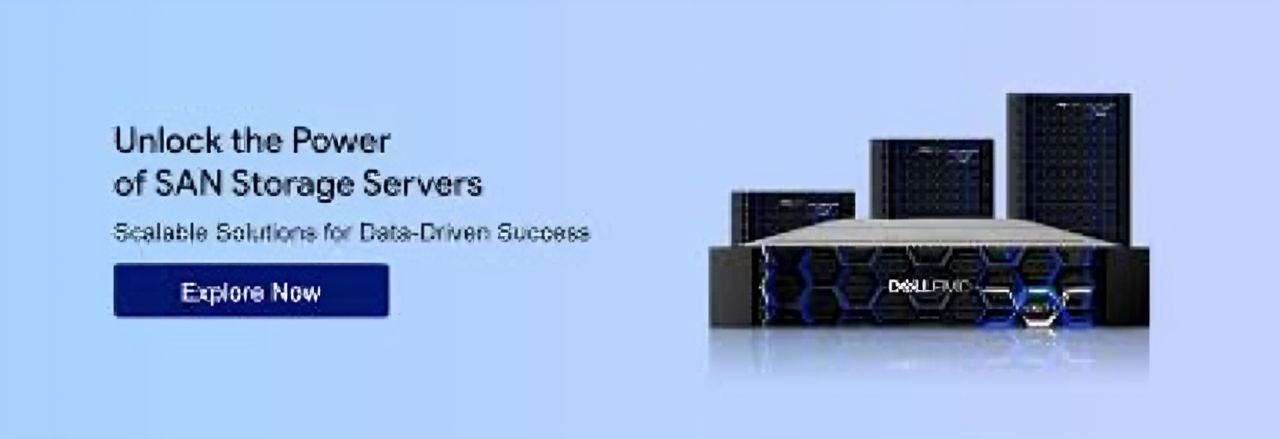Key Takeaways:
- Understanding what influences SAN storage costs
- Assessing your organization’s storage needs versus available solutions
- Exploring the latest trends, innovations, and their impact on SAN prices
- Strategies for getting the best value from your SAN storage investment
Table of Contents:
- Understanding the Basics of SAN Storage
- Factors Influencing SAN Storage Pricing
- Navigating Storage Capacity and Performance Needs
- Latest Trends in SAN Storage Market
- How to Calculate the True Cost of SAN Storage
- Choosing the Right SAN Storage for Your Budget
- Case Studies: Organizations Benefiting from Strategic SAN Investments
- The Future of SAN Storage and Expected Cost Trends
Understanding the Basics of SAN Storage
Storage networks play a pivotal role in managing an organization’s critical data. SAN, or Storage Area Network, systems offer a secure high-speed data transfer infrastructure as the bedrock for enterprises managing large volumes of data. By centralizing storage resources, SANs facilitate better disaster recovery processes and streamline data access, which is essential in today’s rapidly advancing technological era.
SAN prices notwithstanding, the architecture of SAN systems caters to extensive storage requirements, making them particularly beneficial for applications demanding high throughput and minimal latency. SANs thrive in environments where data availability and performance are paramount. Their networked storage configuration enables a SAN to cater to multiple hosts, facilitating a flexible, scalable, and efficient storage management system.
Given the criticality of data in business operations, it is essential to take note of the financial aspect involved in implementing and maintaining a SAN system. Understanding these fundamental benefits is critical before exploring the dynamics of SAN prices, as the actual cost is often tied to the implementing organization’s unique requirements and desired outcomes.
Factors Influencing SAN Storage Pricing
When considering SAN prices, it’s essential to acknowledge the multifaceted nature of the cost landscape associated with SAN storage. This complexity arises from a comprehensive SAN system’s numerous components and intricate structure. Among these components are the hardware elements, encompassing high-performance disk arrays, networking cables, and switches facilitating connections between storage devices and servers. These foundational components dictate the core capabilities and speed of the SAN and play a significant role in determining its price.
The software stack that manages and orchestrates SAN operations also contributes to the total cost. Automation, snapshot, replication, and backup and recovery functionalities are not only essential for modern data management; they also come with licensing fees that affect the overall investment. Furthermore, the level of customer support—from basic troubleshooting to comprehensive maintenance programs—plays a role in the recurring costs associated with SAN systems.
Lastly, the expertise required to design, deploy, and maintain a SAN system must be recognized. Whether they consist of internal competencies or are hired externally, the necessary professional services are a considerable piece of the cost puzzle. This investment in human capital ensures that the SAN system optimally supports organizational requirements and future-proofs the enterprise against rapidly evolving data needs.
Navigating Storage Capacity and Performance Needs
A detailed needs assessment is the first step toward investing in a SAN system that aligns with your organizational goals while respecting budgetary constraints. Identifying the specific storage requirements—data volume, required speed, and expected growth rates—is essential for creating a system that is both cost-efficient and capable of meeting performance expectations. Storage capacities, transfer rates, and the support for intensive I/O operations guide the selection process, directly linking to how the SAN system is priced.
The scalability of a SAN system is another feature that impacts pricing and must be considered in the context of future business expansion. Placing a premium on modular systems that can quickly scale up with additional storage blocks or upgraded components without requiring a total system overhaul is vital. This strategic approach not only ensures the longevity and adaptability of the storage solution but also safeguards your initial investment, converting what could be a potential cost sink into a sustainable long-term asset.
Latest Trends in SAN Storage Market
Staying abreast of the latest trends in SAN storage technology is crucial, as these advancements can dramatically influence pricing and performance. The shift toward all-flash arrays, which substantially improve speed and efficiency over traditional spinning disk technology, has become more pronounced as costs decrease. This pricing trend makes high-performance SAN solutions more accessible to a broader range of businesses, reshaping expectations and investment strategies.
Understanding the financial implications of cloud-based SAN storage solutions can also offer economic flexibility. The Storage-as-a-Service (STaaS) model allows organizations to pivot from CapEx-heavy investments into a more predictable OpEx budgeting. The cloud also introduces potential cost savings with its pay-as-you-grow scalability, directly aligning expenses with usage.
Hyper-converged infrastructure is another disruptive force, combining storage, computing, and networking into a single system. This trend can streamline operations and reduce costs by minimizing the need for separate components and specialists. Noting such market dynamics and their influence on SAN storage offers valuable insight, as discussed in greater detail by Data Center Knowledge in their comprehensive buying guide.
How to Calculate the True Cost of SAN Storage
When quantifying the total investment in a SAN system, it’s paramount to look beyond upfront costs. The Total Cost of Ownership (TCO) encapsulates all expenditures related to the acquisition, deployment, and maintenance of the SAN over its operational life. These expenses include the initial hardware and software purchase, ongoing power and cooling costs, administrative overhead, and potential data loss or downtime costs.
Return on Investment (ROI) is an equally vital measure to contemplate. It evaluates the economic benefits a SAN system delivers over time. When a SAN system enhances business operations by improving data access, preventing data loss, and speeding up critical processes, the resulting efficiency can justify the initial costs. However, it’s essential to account for unexpected expenses in system upgrades, expansions, or additional training for technical staff.
Choosing the Right SAN Storage for Your Budget
With the diverse range of SAN systems available in the market, selecting a solution that balances performance requirements with financial constraints is critical. This selection process thoroughly compares vendors’ features, warranties, and after-sales support. Conducting due diligence and leveraging comparative analysis tools can unveil value propositions more aligned with your budget and operational priorities.
An often-overlooked avenue for potential cost savings is the market for refurbished or previously leased SAN systems. These can offer a viable and economical alternative for companies with more modest budgets or those seeking supplemental storage resources. However, it’s imperative to carefully consider the trade-offs, significantly the shorter life expectancy and potentially limited support services associated with such options.
Case Studies: Organizations Benefiting from Strategic SAN Investments
Insight from companies that have successfully implemented SAN solutions can be tremendously instructive. Industry case studies often illustrate how a meticulously selected and well-integrated SAN system can improve data management and business workflows. They also reflect on the importance of strategic investment, emphasizing how appropriate budgeting can significantly improve storage infrastructure.
Organizations can make educated judgments about SAN investments by drawing on the experiences of others. For a compilation of such informative case studies, exploring the insights provided by TechRadar can shed light on the real-life impact and cost-effectiveness of SAN solutions across various business scenarios.
The Future of SAN Storage and Expected Cost Trends
The future of SAN storage is widely expected to be influenced by ongoing technological advancements and an ever-increasing demand for data storage. Industry experts anticipate continued innovation in SAN technologies that will drive down costs while delivering greater efficiency and capability. Organizations should expect a downward trend in SAN pricing as these technologies mature and see broader market adoption, making these solutions even more accessible.
Proactive planning for the future involves an awareness of upcoming technology trends and a strategic approach to investment that factors in the anticipated evolution of storage needs. Aligning current procurement strategies with these future cost trends can prevent premature obsolescence of storage infrastructure and ensure a high return on investment over the lifespan of the SAN system.










